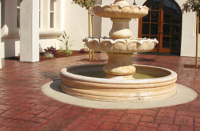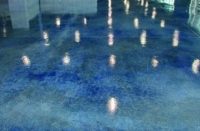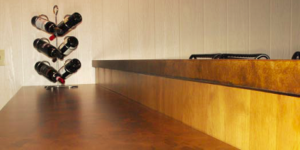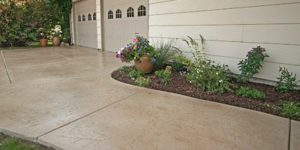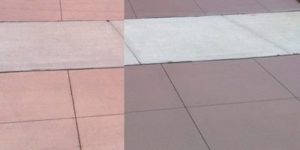
What if I told you that you could get paid over and over again for a project you completed a year or two ago. Would you be interested? No, this isn’t some slick marketing idea or even a take-off of a multilevel marketing or pyramid scheme. Rather, this is working smarter not harder with a fair amount of common sense mixed in.
What we’re talking about is the maintenance and resealing of decorative concrete. In a previous article, we noted a decline in contractors who, for various reasons, weren’t including sealing as part of their bid package or were “opting out” and subcontracting with a specialty contractor to fulfill that part of the contract.
Why throw away the opportunity to create a revenue stream that will grow exponentially as your client base grows? I recently asked an insurance agent friend of mine how the insurance industry business model worked. He explained that when he sold a policy, he received a nice “payout” and, depending on the type of policy, he’d receive a residual “payout” every year it was “in effect.” He added that keeping his existing customers happy required less work than selling the initial policy.
This translates perfectly to our industry. Every time a project is completed the contractor receives a “payout.” Unfortunately, in many cases, this is where the “payout” ends. One and done and onto the next project, right? Fortunately, it doesn’t always have to end this way.
Here are a couple of things to consider when bidding your next project.
- Get educated. To paraphrase Stephen Covey, “Start with the end in mind.”
- Well-maintained decorative concrete is free advertising.
- When bidding on a project, give two bids — a standard bid for installation only and a supplemental bid (based on the cost per square foot) that includes a reseal one to two years after the initial project is complete.
- A proper reseal means residual “payouts” for years to come.

Start with the end in mind
Get educated on sealers and look to the end of the project and work backwards. What appearance are you trying to achieve: a high-gloss, low-gloss or matte finish? Will you be using a solvent-based or water-based sealer, a curing and sealing solution, or an architectural sealer? This will dictate what type of product you’ll use and when and how it should be applied.
Remember, not all products are created equal. Make sure the type of product you ultimately select will be conducive to receiving additional applications in the future, with the least amount of surface preparation required.
Free advertising
Decorative concrete done well, and properly maintained, is long-term free advertising. It’s like having a huge billboard on the side of the road showcasing your work. Word-of-mouth advertising is one of the most effective ways to grow our industry. Conversely, poorly maintained or neglected decorative concrete is a black mark on the decorative industry.
Supplemental bidding
Giving a second or supplemental bid, with a breakout for resealing a year or two in the future, does two things:
- It sets an expectation for the customer about proper care and maintenance.
- It puts you, the contractor, in the driver’s seat to do this work.
It’s easier to keep existing customers happy and reap the benefits of additional paydays than to always count on new business as your only source of income. The average cost to the customer for resealing decorative concrete can range from 50 to 75 cents a square foot.
High profits
A respected decorative contractor who runs a successful business told me resealing decorative concrete that’s less than three years old usually means high profits and, in many cases, as high as a 70 percent gross profit. This isn’t to say that you can’t or shouldn’t reseal concrete older than three years. His point is projects that fall into the less than three-year category typically require less preparation and time on-site. On the other hand, concrete neglected for many years can sometimes cost more than the original project to bring it back to life.
Working smarter, but not necessarily harder, requires thought, preparation and some organizational skills. Building a client base you can go back to again and again for residual “payouts” through regular maintenance reseal work every couple of years, or on an as-needed basis, keeps you in contact with your customers. Remember what my insurance agent friend said: It’s easier to keep a customer happy than to constantly look for new customers as one’s sole source of income.
The added benefit we’ve only lightly touched on is the free advertising aspect of maintaining a relationship with your customer. Proper maintenance not only keeps your work looking fresh and new, it also can help increase your client base. It provides you the opportunity to go back to your customers from time to time to ask them if they know of anyone interested in having some decorative concrete work done.
I know what many of you may be thinking: this is really outside my comfort zone. I get that. However, it works.
Contractors who produce quality work make themselves invaluable by keeping their work looking fresh and getting paid for the effort. It opens up a whole new revenue stream far beyond just doing maintenance/reseal work. The leads that come back from your clients are now “qualified leads” with you sitting firmly in the prime position to create additional revenue streams through new work and, yes, maintenance/reseal work. Your client base will grow and your residual “payouts” will grow right along with it.
